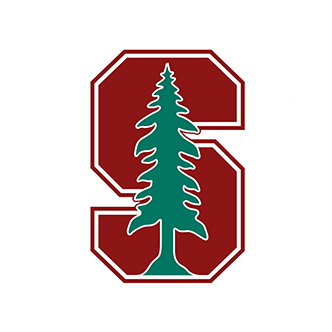




















































































































































































































































































































































































































































































































































































































































































































































































































































































































































































































































































































































































































































































































































































































































































































































































































































































































































































































































































مشخصات اثر در آرشیو دیجیتال دانشگاه استنفورد
Label
Walters Ms. W.605, Five poems (quintet)
Available Online
Title
Walters Ms. W.605, Five poems (quintet)
Kitāb-i Khamsah-i Shaykh-i Niẓāmī
كتاب خمسه شيخ نظامى
Contributor
Niẓāmī Ganjavī, 1140 or 41-1202 or 3 (author)
Ilyās ibn Yūsuf Niẓāmī Ganjavī (author)
الياس بن يوسف نظامى گنجوى (author)
Jamāl al-Dīn Muḥammad al-Ṣiddīqī al-Iṣfahānī (artist)
Abū Bakr Shāh ibn Ḥasan ibn ʿAlī al-Shahrastānī (scribe)
Description
This copy of the Khamsah (quintet) of Niẓāmī Ganjavī (d. 605 AH / 1209 CE) was written by Abū Bakr Shāh ibn Ḥasan ibn ʿAlī al-Shahrastānī and illuminated by Jamāl al-Dīn ibn Muḥammad al-Ṣiddīqī al-Iṣfahānī between 892 AH / 1486 CE and 900 AH / 1494-5 CE. The manuscript opens with a double-page illuminated frontispiece with an inscription giving the title of the work and the name of the author (fols. 1b-2a). There are four illuminated titlepieces with the names of the individual poems and twenty-six repainted illustrations. According to evidence supplied by the colophons, the original binding was by the hand of Jamāl al-Dīn ibn Muḥammad al-Ṣiddīqī al-Iṣfahānī, as well. Unfortunately, it has not survived. The binding presently attached to the manuscript dates to the twelfth century AH / eighteenth CE.
For full description, see http://www.thedigitalwalters.org/Data/WaltersManuscripts/html/W605/description.html
The primary language in this manuscript is Persian.
Twenty-six illustrations, most repainted later; double-page illuminated frontispiece with the inscription in gold thuluth script in four cartouches: Kitāb-i Khamsah-i (fol. 1a top), Shaykh-i Niẓāmī (fol. 1b top), ʿalayhi al-raḥmah (fol. 1a bottom), and wa-al-riḍwān (fol. 2b bottom); four titlepieces with the titles of individual poems (fols. 43b, 120b, 211b, and 315b)
fol. 1b Double-page illuminated frontispiece Frontispiece This is the right side of a double-page illuminated frontispiece, which together with the left side contains the title and the author's name, written in gold thuluth script.
fol. 2a Double-page illuminated frontispiece Frontispiece This is the left side of a double-page illuminated frontispiece, which together with the right side contains the title and the author's name, written in gold thuluth script.
fol. 21b King Nūshirvān hunting with Dastūr, his vizier Illustration
fol. 27b King Farīdūn hunting deer Illustration
fol. 40a An old man speaking with a king's confidant Illustration
fol. 61b Laylá and Majnūn at school Illustration
fol. 66b Majnūn brought to the Kaʿba in Mecca Illustration
fol. 68b Majnūn visited by his father Illustration
fol. 73b Laylá in a garden in the company of young women Illustration
fol. 75a Nawfal, a friend of Majnūn, fighting with Laylá’s tribe Illustration
fol. 78b Majnūn playing with wild animals Illustration
fol. 83b Majnūn playing with wild animals Illustration
fol. 85a Majūn and his father embracing in the wilderness Illustration
fol. 88b Majnūn visiting his father’s tomb Illustration
fol. 90a Khusraw and Farhād Illustration This folio is misbound.
fol. 94b Bahram Gūr in the green pavilion Illustration This folio is misbound.
fol. 97b Salīm, a youth from Baghdad, visiting Majnūn Illustration
fol. 98a Majnūn meeting his mother in the presence of Salīm Illustration
fol. 100a Laylá and Majnūn reunited in the wilderness Illustration
fol. 112b Majnūn fainting at Laylá’s tomb Illustration
fol. 120b Incipit page with illuminated titlepiece Incipit; titlepiece This illuminated incipit page has a titlepiece inscribed with the title of the poem, Kitāb-i Haft paykar, in gold ink.
fol. 137b Bahrām Gūr killing a lion Illustration
fol. 138a Bahrām Gūr killing a dragon Illustration
fol. 173b Khusraw being told about Farhād’s love for Shīrīn Illustration
fol. 183a Bahrām Gūr in the blue pavilion Illustration
fol. 211b Incipit page with illuminated titlepiece Incipit; titlepiece This incipit page has an illuminated titlepiece inscribed with the title of the poem, Kitāb-i Khusraw va Shīrīn, in gold ink.
fol. 257a Khusraw and Shīrīn enthroned in the presence of courtiers Illustration
fol. 258b Farhād, the lover of Shīrīn, in the presence of the king’s messenger Illustration
fol. 277a Khusraw asking pardon from Shīrīn Illustration
fol. 292a Shīrīn meeting Khusraw Illustration
fol. 315b Incipit page with illuminated titlepiece Incipit; titlepiece This illuminated incipit page has a titlepiece inscribed with the title of the poem, Kitāb-i Iskandarnāmah, in gold ink.
892 AH / 1486 CE; another date of 900 AH / 1494-5 CE given on fol. 446a for the completion of the illuminations and binding
Walters Art Museum, 1931, by Henry Walters bequest
Language
Persian
Format
paper
image/jpeg
Date
1486
Attribution
All Walters manuscript images and descriptions provided here are copyrighted © The Walters Art Museum.
See also

